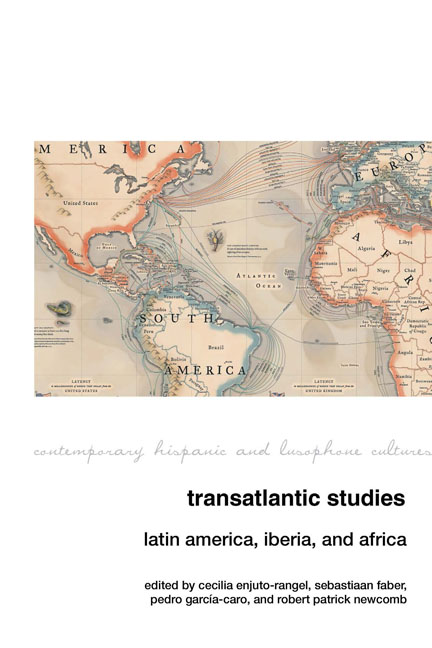Book contents
- Frontmatter
- Contents
- Introduction: Transatlantic Studies: Staking Out the Field
- Transatlantic Methodologies
- Transatlantic Linguistic Debates
- Transatlantic Displacement
- Transatlantic Memory
- Transatlantic Postcolonial Affinities
- Transatlantic Influence
- Epilogue: The Futureâif There Is OneâIs Transatlantic
- Index
19 - Between Empires: Spanish Immigrants in the United States (1868–1945)
- Frontmatter
- Contents
- Introduction: Transatlantic Studies: Staking Out the Field
- Transatlantic Methodologies
- Transatlantic Linguistic Debates
- Transatlantic Displacement
- Transatlantic Memory
- Transatlantic Postcolonial Affinities
- Transatlantic Influence
- Epilogue: The Futureâif There Is OneâIs Transatlantic
- Index
Summary
Invisibility
“Spaniards in the United States”: this expression is likely to conjure up images of the friars, explorers, and conquistadores who, during the sixteenth, seventeenth, and eighteenth centuries, explored, claimed, and settled vast swathes of what today is US territory on behalf of the Spanish Crown. Even specialists in the burgeoning field of Transatlantic Studies may not be aware that in the late nineteenth and early twentieth centuries, tens of thousands of Spanish peasants, seamen, and workers emigrated to the United States, and settled in an archipelago of tight-knit enclaves that dotted the entire country from Barre, Vermont to Monterey, California and from Boise, Idaho to Tampa, Florida.
Neither friars nor conquistadors, those tens of thousands of immigrants who ended up in the United States represent just a tiny percentage of the millions of Spaniards who, in those same years, crossed the Atlantic, most with the goal of settling in various points of the Spanish-speaking Americas. Herein lies one of the best-kept demographic secrets of the American hemisphere: the massive presence of Spaniards in the Americas—South, Central, and North—is largely a post-imperial phenomenon. Since the bulk of Spain's American colonies had gained independence by 1820, the roughly 6 million Spaniards who later emigrated to independent republics like Argentina, Chile, or Mexico cannot in any meaningful way be construed as “agents of empire.” In fact, these emigrants were, in many cases, fleeing from the disastrous effects of empire and its aftermath on the Iberian Peninsula. And chief among those deleterious effects of empire on the metropolis were, of course, endemic inequality and lack of opportunity. Even after 1898, when Spain finally lost sovereignty over its last two American territories—Cuba and Puerto Rico—the emigration of Spaniards to the Antilles only increased. In short: the “presence of Spaniards in the Americas” has often been conflated and confused with “Spanish colonial rule in the Americas” when, in fact, the two phenomena are, historically speaking, inversely related. Less Spanish rule in the Americas actually engendered more Spanish emigration to the Americas.
- Type
- Chapter
- Information
- Transatlantic StudiesLatin America, Iberia, and Africa, pp. 229 - 239Publisher: Liverpool University PressPrint publication year: 2019



